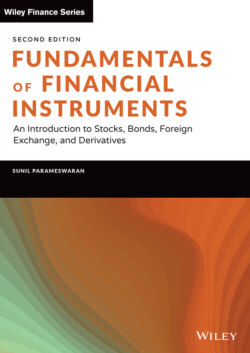Читать книгу Fundamentals of Financial Instruments - Sunil K. Parameswaran - Страница 44
На сайте Литреса книга снята с продажи.
TRADING POSITIONS
ОглавлениеTraders are said to have a long position when they own an asset. An investor with a long position will gain if the price subsequently rises and will lose if it were to fall subsequently. A rise in price will constitute a capital gain at the time of sale, whereas a price decline would be termed as a capital loss. The principle behind the assumption of such a position is: buy low and sell high. Investors who take long positions in anticipation of rising prices are said to be bullish in nature and are termed as bulls.
All traders in the market need not be bullish about the future. Some may be of the opinion that prices are going to decline. Such investors will assume what are termed as short positions. Traders are said to have taken a short position when they have sold an asset they do not own. In practice, this is accomplished by borrowing the asset from another investor. Such a transaction is called a short sale. In such cases, traders will have to eventually purchase the asset and return it to the lender. If their reading of the market is correct, and prices do decline by the time the asset is bought back to close out the position, they stand to make a profit. When someone with a short position acquires the asset, they are said to be covering their position. Short sellers, therefore, seek to sell high and buy low. Short-selling is considered a bearish activity and such investors are termed as bears.
